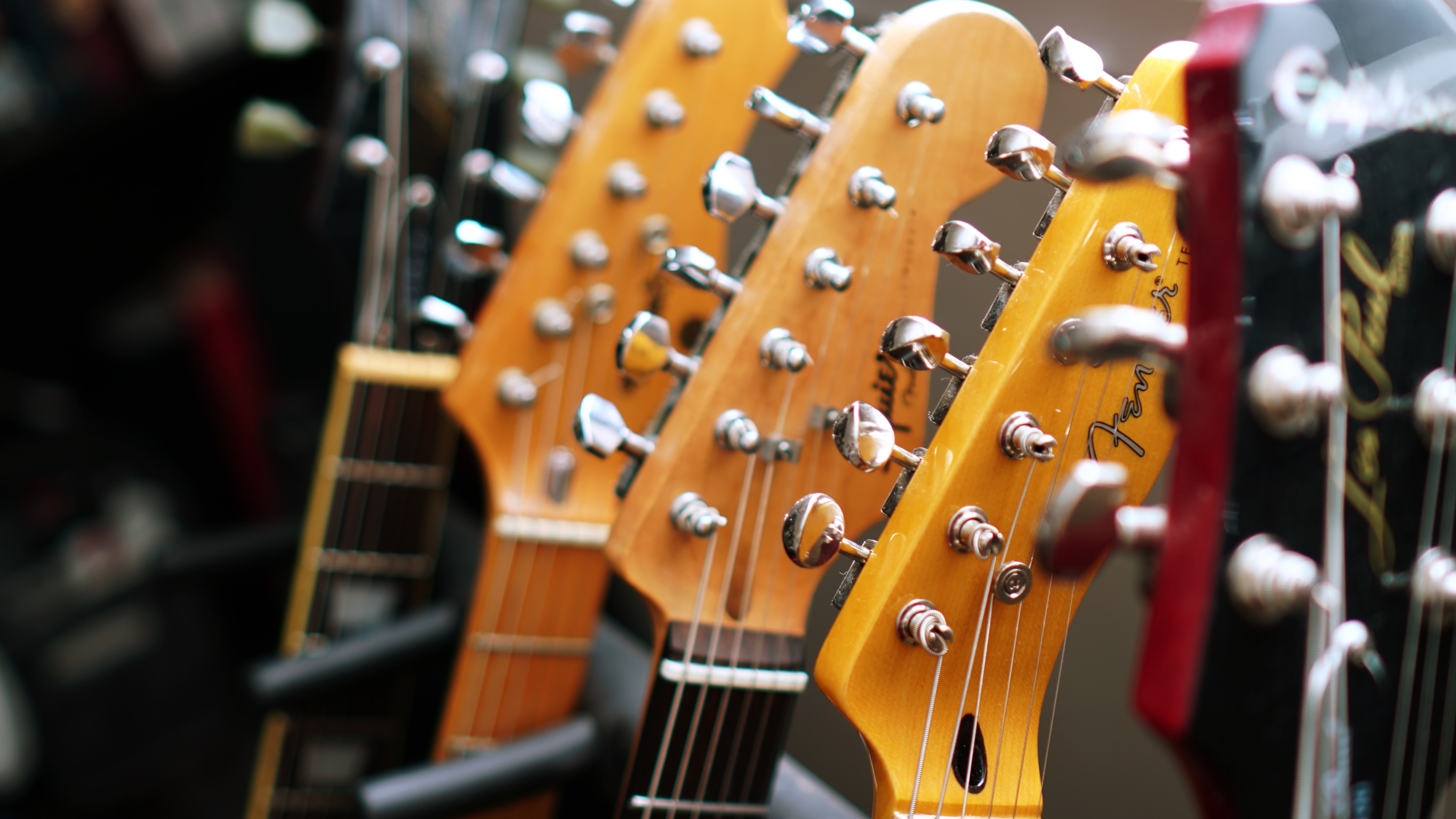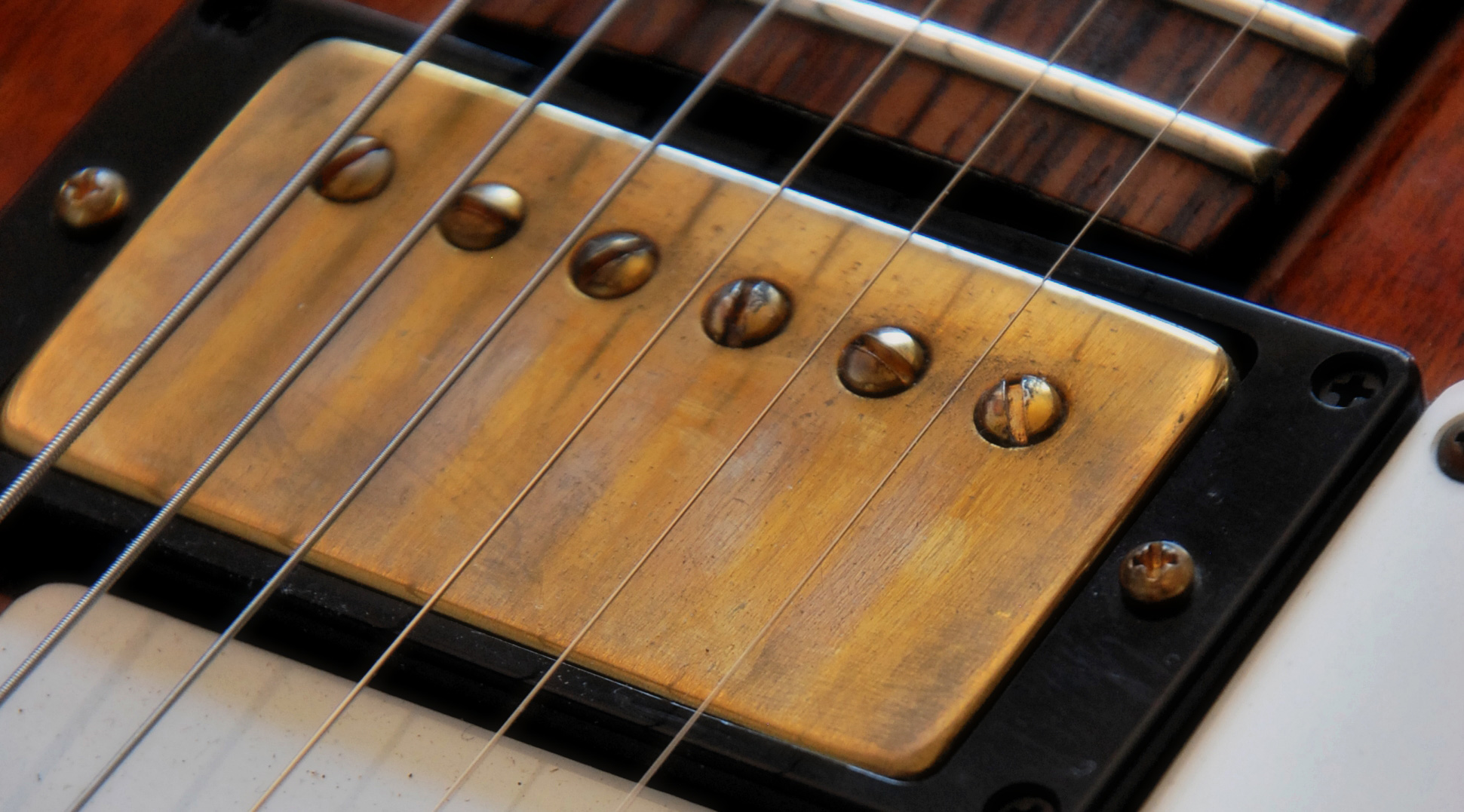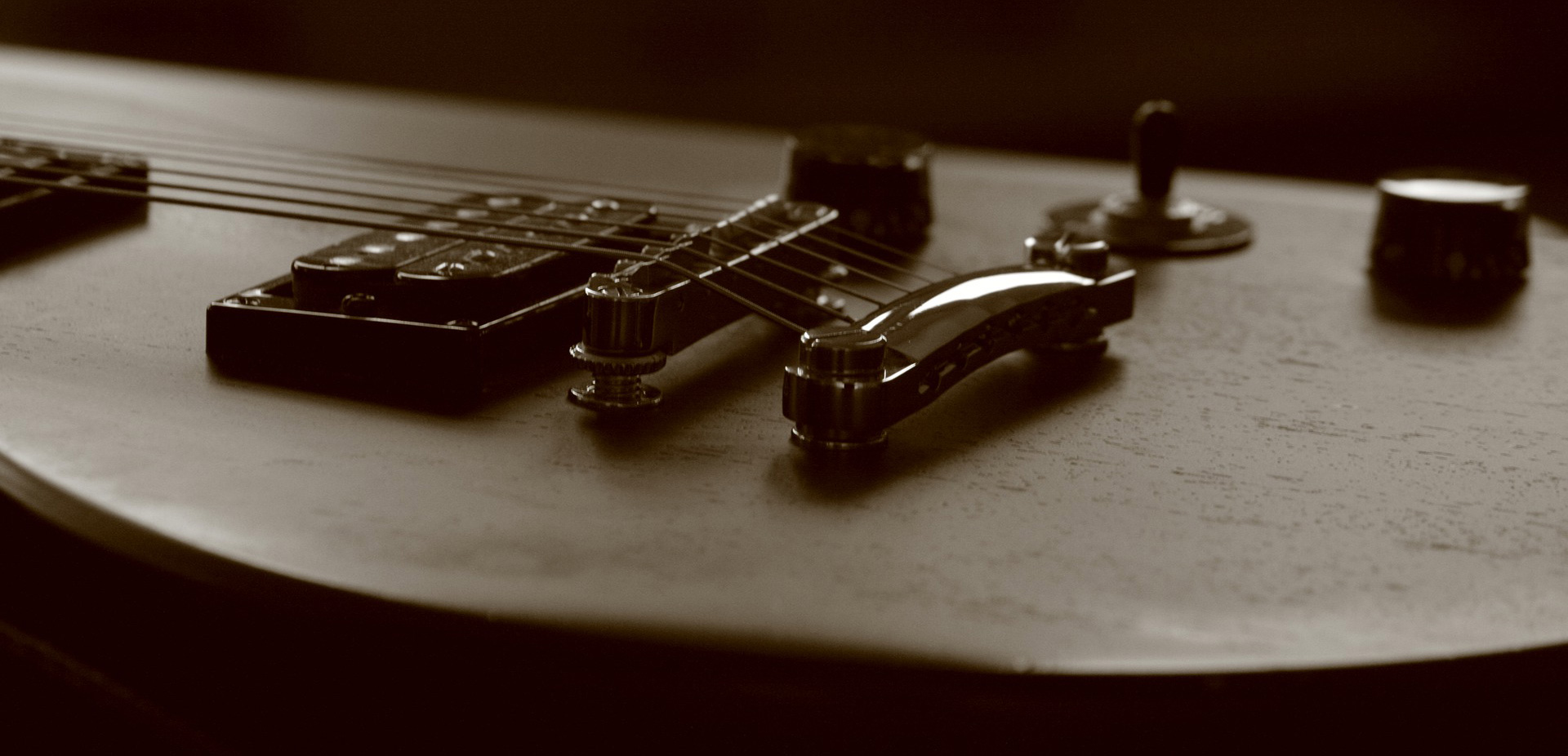How to choose your electric guitar?

To make it easy there is 4 vital elements to the sound of a guitar:
- The body: Solid body, Semi-hollow or hollow body
- Which wood has been used to make the body of the guitar
- Which wood has been used to build the neck the guitar and how it is connected to the body
- Which pickups and their set up, transmitting the strings vibration to the amp
Some other secondary elements (bridge, saddle, keys, finish) will enhance or reduce the fundamental qualities that we listed earlier. Whatever your budget, the most important is the quality/price relationship. We are lucky enough to live in times where the production quality of instruments is way higher, even with bottom range instruments.
Some will hesitate to invest in a middle/high range instrument. Know that the higher the price the harder it is to justify the price difference between two similar instruments (for example a Gibson Les Paul Standard Traditional and a Les Paul Standard Custom Shop); nevertheless the difference exists and an accomplished guitar player with an acute ear will know instantly the difference between both. It is really about the feeling.
As long as you do not feel like having this kind of "wisdom" we advise you to invest in an instrument to your size. Try to avoid getting under the 130/150€ bar, even if you are a beginner you will quickly notice that many bottom-end instruments do not hold the tone and are hard to set up. It is way better to save up a bit and buy an instrument true to its name!
Body type: Solid Body, Semi-Hollow Body, Hollow Body
SOLID BODY GUITAR
Such as Fender Stratocaster Standard or Gibson Les Paul, It is a guitar with a "solid" body (without resonance), easy to handle because of its width and easy to amplify because it tends to avoid undesirable effects such as Larsen. It can be fitted with every kind of pick-up and tuning keys. Versatile, it can be used to play almost any genre (Pop, Rock, Blues, Funk, Hard, Metal). Some solid body guitars are "chambered". Invisible to the naked eye this cavity in the body lightens the guitar and enhances the sound!
SEMI-HOLLOW BODY GUITAR
Such as Gibson ES-335or Fender Telecaster Thinline, these guitars are hybrid guitars, the body is partially hollow (an internal pole goes from the neck to the saddle and bind the top and back together), the guitar sounds pseudo-acoustic. The basses are lighter than on a solid body guitar and often sports f-holes (like on violins). This kind of instrument is quite versatile, but is the favorite of Blues-Rock guitar player for its warm and deep sound. Metal players usually dislike its soft bass sound.
HOLLOW BODY GUITAR / JAZZ BOX
A hollow body guitar is a guitar which body has been emptied (Gibson ES-175, Godin 5th Avenue or Archtop guitars) such as an acoustic guitar, even if they are from different conceptions. They come with or without pick-ups, it's the instrument of choice of many a jazz guitarists thanks to its amplitude, colorful sound and subtleties. This kind of guitar is not suited to amplification, because of its sensibility to Larsen effects.
Guitar body - Woods
Contrary to what one might think, the choice of an essence rather than another for the manufacture of the body of an electric guitar (and an acoustic guitar!) plays a fundamental part. Depending on the species used, the guitar will have a dynamic behavior and response to specific frequencies. It depends of the velocity of vibration transmission and the emphasis on low, medium and high frequencies.
A simple example: everyone will agree that a Fender Stratocaster or Gibson Les Paul have very distinct personalities, even if they are played unamplified.
It should be noted that the quality of the species used, which can vary greatly depending on the price range, will have an impact on the final result. But it's not always easy to feel the differences between two apparently identical guitars in different price ranges; your experience and the habit of your ear come into play.
That's why we advise against investing in an instrument that is too expensive, as you may not appreciate its quality level yet. In addition, current manufacturing techniques have optimized the quality of the basic instruments and it is possible to be really satisfied in a price range of 150 to 300 €.
The choice is vast, nevertheless, most electric guitars are made from essential essences: Mahogany, Maple, Alder, Lime, and Ash.
The neck - woods
BODY JOINT TECHNIQUES
- The way the neck is connected to the body of the guitar plays a critical role in the sound of the instrument. The three basic methods are: bolt-on necks, set on necks, neck through necks.
- Bolt-on neck : this is the technique used by Fender which originally wanted to offer instruments kits with different parts that could be easily replaced. This method of fastening the neck tends to give the guitar brilliance and an extra punch.
- Set neck: : popularized by Gibson then PRS, this technique favors conductivity and thus sustain (duration of note), and gives a light velvet touch to the sound.
- Neck-through neck: this procedure, expensive to produce, is generally reserved for high-end instruments. The handle runs from one end of the instrument to the other, making it an integral part of the body and ensuring optimal vibration transmission. "Wings" are added on each side of the handle (a good example is the Gibson Firebird). It is recognized that neck-through systems tend to cut some low frequencies, increasing the brilliance of the guitar. The acoustic characteristics are thus hybrid between a glued handle and a screwed handle.
TYPE OF WOOD
As with the body of the instrument, the woods that make up the neck and the fingerboard will give very different results. For the handle itself, the most common woods are Maple and Mahogany; for the fingerboard, we generally find Maple, Rosewood, Ebony and occasionally Pau Ferro.
SCALE LENGTH
The scale length is the vibration length of the strings between the nut and the bridge; it has an impact on the sound and comfort of playing (the difference between the frets is calculated according to a variable ratio according to the scale length). With equal strings gauge and similar tuning, playing will seem softer if the scale length is short. The two referenced scale lengths are the Gibson 24.75" and the Fender 25.50". The former partly gives the Les Paul its round attack and powerful bass, while the latter contributes to the light and snappy side of the Stratocaster or Telecaster.
FRETS
Most electric guitars are equipped with 21,22 or 24 frets (two octaves). Apart from the fact that the larger the number of frets, the wider the note range, it is worth noting that this also influences the position of the neck mic: this last one, pushed back towards the head with a neck 21 frets will offer sounds slightly lower than a similar guitar equipped with 22 frets.
The size of the frets is important for the playing comfort. The sensations are different with smalls or jumbo frets; the first ones have the advantage of optimizing tone (justness). The second ones facilitate bends; this is probably why the manufacturers equip their guitar with medium frets, an ideal middle-ground.
Pickups: design and configuration

They are the voice of the guitar! It is through them that the vibrations of the instrument are transmitted to the amplification, electromagnetically converting the vibrations of the strings into an electrical signal.
An electro-magnetic pickup is therefore composed of a magnet around which a copper wire is wound. The magnet power is variable and influences the sound (output volume, frequency balance). It can be composed of various metal alloys, the most popular of which is AlNiCo (aluminum-nickel-cobalt). Similarly, the thickness of the copper wire and the number of turns around the magnet play a role in the character of the microphone.
Historically speaking, the first pickup draft where developed in the 1920s by George Beauchamp and Alfred Rickenbaker. In 1935, Gibson was the first company to produce a commercial-scale electro-magnetic pickup (' The Bar'), which it originally installed on its Hawaiian Lap Steel Guitars; it was already present on the ES-150 in 1936 and on some Banjos in 1938. Adopted by Charlie Christian, this microphone became extremely popular and eventually took the name of the famous jazz guitarist.
In the 1950s, Ted McCarty, then president of Gibson, asked his colleagues Walt Fuller and Seth Lover to name a new microphone that could overcome the shortcomings of their first single-coil pickup that was highly sensitive to electrical interference and therefore tended to generate noise. After a year of hard work, Seth Lover filed a patent in 1955 for the first "Humbucker" pickup, which was designed with two coils to literally eliminate humming.
There are therefore two types of pickups with very different characteristics: single-coil and double-coil pickups. As this guide is intended for beginners, we will focus on the details of the technical design, the main concern being to determine the microphone configuration that best meets your expectations: 2 single-coil pickups (SS), 3 single-coil pickups (SSS), 2 double-coil pickups (HH), 1 double-coil and 2 single-coil pickups (HSS) etc.....
Most entry-to-mid-range instruments are equipped with pickups of suitable quality, but to be honest, it is obvious that the installation of more powerful pickups will be interesting. It is not inevitable, but in the long run, consider updating your electronics as long as you feel satisfied with your guitar.
In practical terms, a single-coil has a clearer, more crystalline and less powerful sound than a double-coil. Depending on your tastes, you may prefer this or that type of combination, knowing that a single-coil will not necessarily be reserved for clear sounds or a double-coil for saturated sounds. Take the time to observe and listen to the guitars your favorite guitarists play with and follow the lead. For the most puzzled among you, know nevertheless that the most versatile configurations will be HSS or HSH, and that to get big Hard-Metal sounds, it is better to have a humbucker in bridge position, this one being easier to saturate.
To end with electronics, some brands (such as Godin with its LGXT model) offer, in addition to magnetic microphones, guitars with piezo pickups, MIDI or USB interfaces. From our point of view, the addition of a piezo system capturing the signal like an acoustic guitar gives excellent and very interesting results when the two sources (magnetic + piezo) are mixed and used on clear or moderately saturated sounds. As far as MIDI and USB capture are concerned, it can be practical for a joint use with computers.
Fixed Bridge or Tremolo / Whammy Bar

The first choice is a system-binomial fixed on the body, including a tailpiece to hold the strings, and an bridge from which it will be possible to adjust not only the height of the strings in relation to the frets, but also the intonation at the twelfth key (to make the guitar sound right, the length of the string between the neck and the twelfth square must be equivalent to that between the twelfth square and the saddle. The bridges are removable for this purpose.
The fixed saddle offers a great stability of tuning, favous a better sustain and extra amplitude, especially at the level of the E, B and G strings.
Moreover, it is not a problem if you want to "detune" your guitar (tune the bass E down to D for example, the Hard-Heavy way), it will be easily done.
On some guitars (e. g. PRS Singlecut SE Stoptail), the tailpiece and bridge are one and the same.
For guitarists leaning more on the solo side, the second option is to buy a guitar with a Whammy bar. This lever, acting on the pitch of the note (tilted forward the note plunges into the bass - tilted backwards the note goes up in the treble), is a beautiful tool that is very expressive when correctly used.
There are models with a single tremolo block (fender Stratocaster) or double block (floyd Rose or Ibanez Edge). Double block vibratos offer great tuning stability and are perfect for lead guitarists in the style of Van Halen, Joe Satriani, Steve Vai and others. On the other hand, this type of tremolo tends to' eat' the sustain, the size of the sound and give a slight metallic tint to the tone.
The single block vibratos whose two emblematic models are the Fender Synchronized Tremolo (cf Stevie Ray Vaughan or Jeff Beck) and the Bigsby Tremolo (cf Brian Setzer) make it possible to obtain beautiful modulations and embellish your natural touch. They will have to be used with moderation because they are less stable than the double block systems. They also stifle the sound a bit, but they don't have the metallic tone described earlier.
Tuners or Tuning machines
They have an obvious significance in the proper tuning of your guitar. The models with oil bath now equip almost all instruments and ensure stable and precise adjustment.
The ratio of a tuning peg (14:1,16:1,18:1) is the ratio between the number of 360° revolutions that the knob must make in order for the mechanic to face itself a full revolution. The higher it is, the more sensitive and precise the mechanics.
Some mechanics are called "self-locking"; they are fitted with a clamping system that prevents too many turns around the axis of the mechanics, sometimes causing unwanted disagreements. This is a plus, but it is not a must: if you install your strings correctly on a conventional tuner, with a reasonable number of turns (2 or 3 in general), taking care that they are well above each other without overlapping, you will not have any problem.
Learn to play guitar
You have different options to learn to play the electric guitar. You can obviously learn to play by yourself (Youtube is your best friend) or take lessons with music schools online. If you think that a teacher is a best option for you, you can either take private classes at home or group classes.
Any questions?
You now have all the basics you need to get started and choose your electric guitar. Obviously, not everything is summarized in this guide and you may have some questions or wish to get more advice about choosing your electric guitar. The Star's Music team is at your disposal to guide you in our stores or by phone +33 1 80 930 900.
